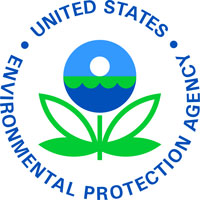Friends of Wetlands signed on to this letter which is excerpted here.
On behalf of the Ohio organizations of the Healing Our Waters©-Great Lakes Coalition, we ask you to support $475 million for the Great Lakes Restoration Initiative (GLRI) in fiscal year 2011. Freezing funding for this multi-year initiative at fiscal year 2010 levels will accelerate the restoration of the Great Lakes, improving our nation’s environment and creating jobs.
Benefit of Lake Erie to Ohio
Lake Erie is a foundation of health, economic vitality, and recreation for millions of Ohioans. Unique among the Great Lakes, Lake Erie is the shallowest, warmest and most biologically productive. The Lake supports one of the largest freshwater commercial fisheries in the world and the largest sport fishery in the Great Lakes, producing more fish for human consumption than the other four Great Lakes combined.
The 11,649 square miles that make up Ohio’s Lake Erie basin are comprised of beech-maple, oak, hemlock, and hardwood forests, as well as marshes, vernal pools and bogs, rare oak savannas, lakeshore grasslands, sand dunes, and more. These habitats sustain more than 1,500 species of plants and animals. Threatened, endangered and rare species located within these extraordinary and unparalleled ecosystems include the wild lupine, Showy Lady’s Slipper orchid, four-toed salamander, Lake Erie water snake and the Karner blue butterfly.
While Lake Erie does so much for us, it desperately needs our help. Invasive species like the quagga mussel are crowding out native fish and wildlife. Antiquated sewer systems and failing septic tanks dump raw, untreated sewage into the lakes and its tributaries, making the waters of our beaches unsafe for swimming.
Funding to Restore our Great Lakes and Improve our Quality of Life
As you know, President Obama committed to a five-year, $5-billion program to implement the Great Lakes restoration and protection strategy. The $475 million provided for the GLRI to implement this plan in fiscal year 2010 is a strong start. However, we cannot let up now. Sustained, consistent funding is needed to keep pace with the urgent threats to the Lakes; make up for years of inadequate federal investment; fulfill the President’s promise; and ensure the GLRI’s long-term success.
Last year the President proposed and Congress supported the Great Lakes Restoration Initiative, a new $475 million multi-year initiative to accelerate progress in restoring the Great Lakes. This new initiative puts people to work solving the most urgent problems facing the Lakes. Sustained investment of the GLRI this year will help clean up toxic pollution that poses a threat to people and wildlife; restore wetlands to improve water quality and provide wildlife habitat that is important to the region’s tourism industry; and prevent and control new invasive species that cost the region at least $200 million every year.
Conclusion
We are poised to make real progress in restoring the Great Lakes. This progress is critical not only for our environment but also our economy. The Brookings Institution showed that a $25 billion investment in cleaning up toxic sediments, restoring wetlands or preventing sewer overflows leads to at least $50 billion in economic benefit to the region and nation; including higher property values, new development, more recreational opportunities, new jobs, and a better quality of life! The longer we wait to make needed investments in the Great Lakes, however, the worse and more expensive the problems they face get.
Great Lakes problems won’t solve themselves. They need your help, which is why we urge you to support freezing funding for the GLRI in fiscal year 2011 at last year’s level of $475 million.






